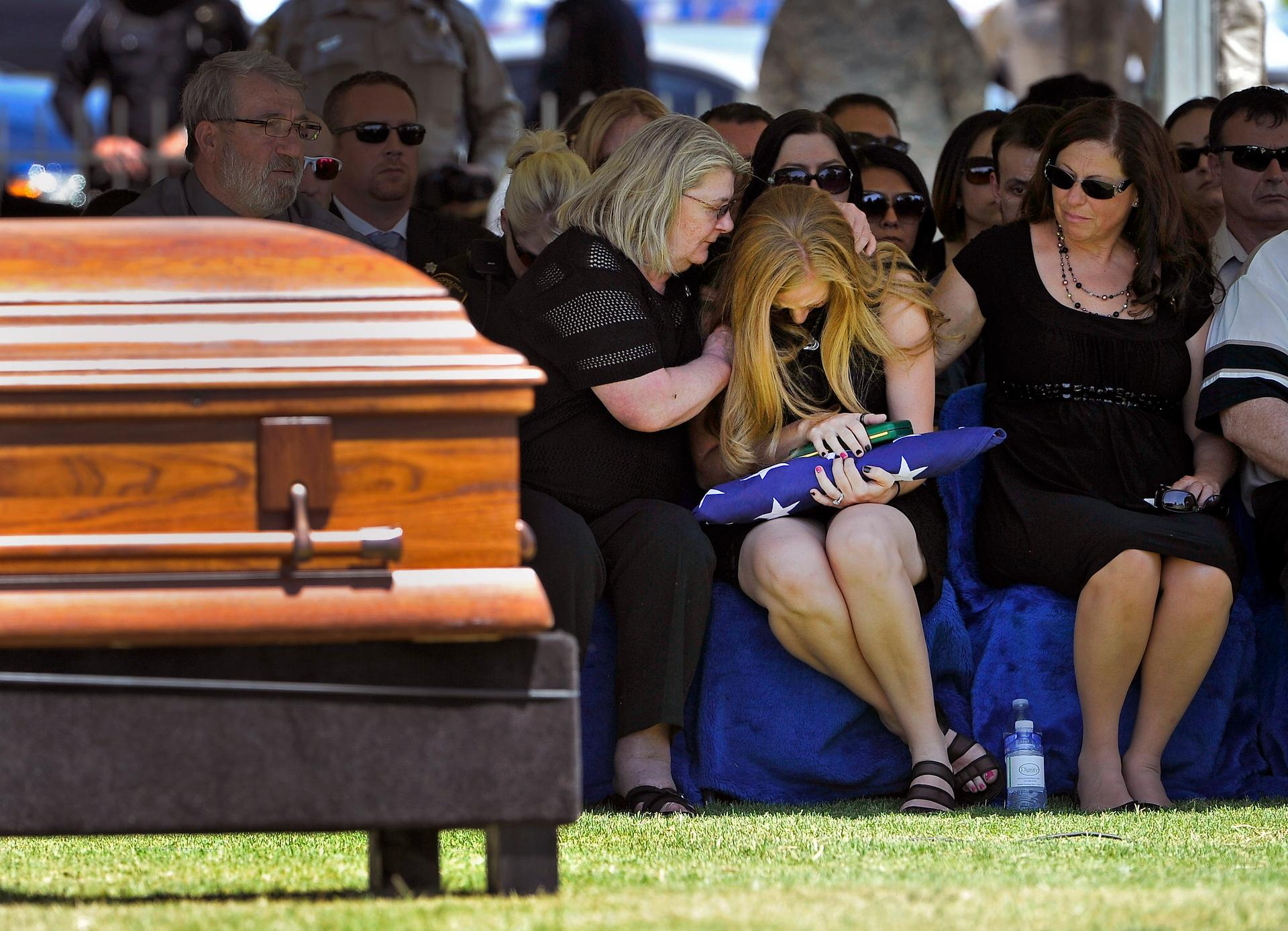Americans don’t talk much about death, but that may be changing
Andrea Soldo is consoled by family members after receiving a flag during the funeral services for her husband, Las Vegas police officer Igor Soldo, in Las Vegas, Nevada, on June 12, 2014.
Across the country, in cafes, dining rooms, and community centers, there’s a new conversation taking shape. After decades of sanitizing and sequestering death and dying, America seems ready to talk about death.
“When I tell people what I do, I'm the most popular girl at the party," says mortician and writer Caitlin Doughty. "People are like, 'Wait, you cremate bodies? Tell me more!'"
(Editor's note: This is the first part of a full series on death and dying produced by To The Best of our Knowledge. Several pieces will be featured here on PRI.org in the coming weeks — but you can see all of it at TTBOOK.org.)
On her popular "Ask a Mortician" YouTube channel and in her new memoir, "Smoke Gets In Your Eyes," Doughty pulls back the curtain on cremation, embalming, burials and exploding caskets — all in cheerfully morbid detail.
Embracing the macabre is part of Doughty’s campaign to combat our death-phobic culture. “It’s about making death a part of your life,” she says.
As her website reads, “that means staring down your death fears – whether it be your own death, the death of those you love, the pain of dying, the afterlife (or lack thereof), grief, corpses, bodily decomposition, or all of the above. Accepting that death itself is natural, but the death anxiety and terror of modern culture are not.”
Another place where people don’t talk enough about death is, surprisingly, the doctor’s office. Filmmakers Michael Bernhagen and Terry Kaldhusdal recently laid out the emotional and financial costs of avoiding frank discussions about the end of life in their PBS documentaries titled "Consider the Conversation."
“American medicine’s success at fighting disease and extending life has created a new problem,” Bernhagen says. “The majority of us do want to die at home and we do want to talk about it. But guess what? Fifty percent will die in a hospital, 20 percent hooked up to a bunch of tubes and machines in an ICU, and another 25 percent in a skilled nursing facility. So there’s a huge disconnect.”
Kaldhustal says the medical profession needs to confront these talks head-on: “If we don’t talk with our families and doctors about what we want at the end of life, someone else will make the decisions for us."
Before this project, Bernhagen and Kaldhusdal weren't professional filmmakers. Kalhdusdal is a sixth grade teacher in Wisconsin, and Bernhagen works in hospice. Initially, they weren’t sure anyone would even want to see their films, but their community screenings regularly sell out.
Kaldhusdal says he understands that death is a difficult subject for a lot of people. “I’ve given our films to family members and friends and they don’t watch,” he says. “I know they don’t because they don’t say anything. But once they do, they say ‘Wow, I love that.’ And it leads to great conversations.”
This story is based on interviews from PRI's To the Best of Our Knowledge, an audio magazine of ideas that's two hours of smart, entertaining radio for people with curious minds.
Our coverage reaches millions each week, but only a small fraction of listeners contribute to sustain our program. We still need 224 more people to donate $100 or $10/monthly to unlock our $67,000 match. Will you help us get there today?
